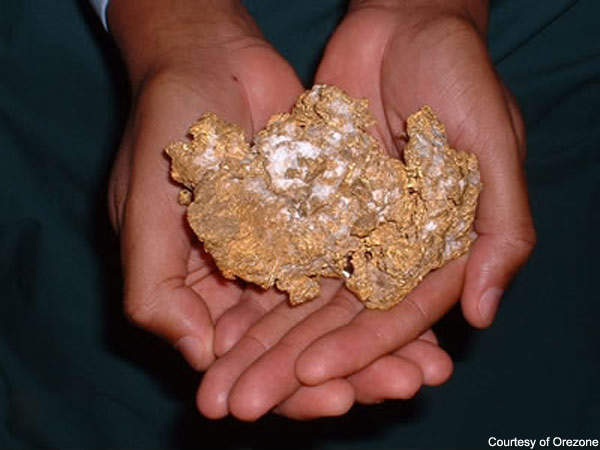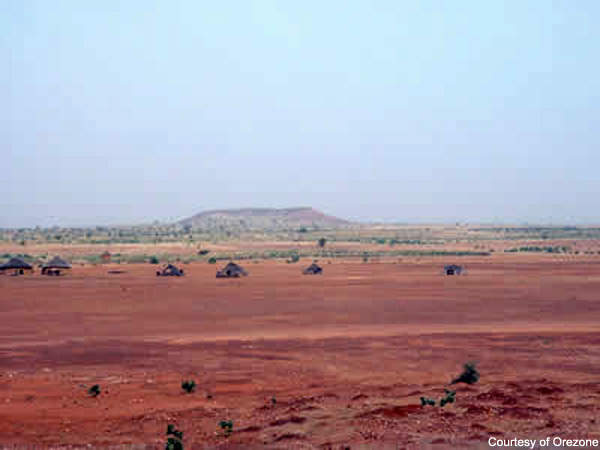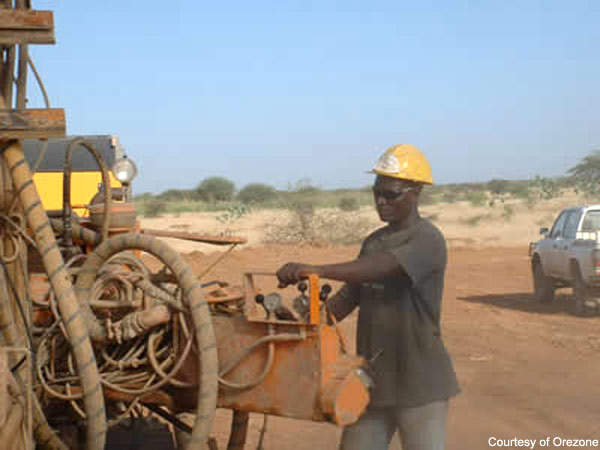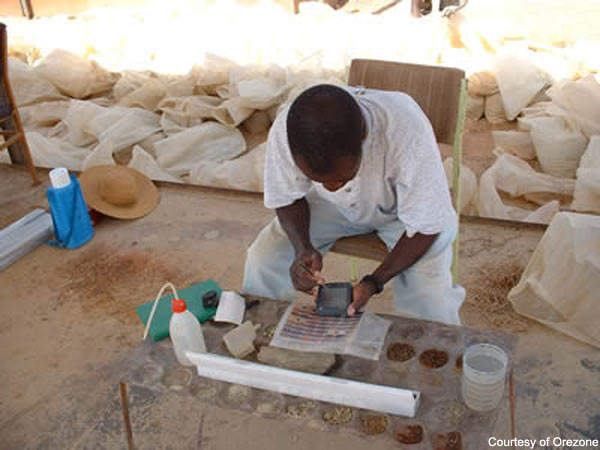The government of Burkina Faso has passed a law that grants Canadian company Orezone Resources Inc’s subsidiary Essakane SA an industrial mining permit for the Essakane gold mine project, a 1,200km² property 330km north-east of the West African republic’s capital, Ouagadougou, on the Gorouol river in the Oudalan province.
In October 2007, Orezone entered into an agreement with its partner Gold Fields Ltd to acquire its 60% interest in the Essakane project in consideration for $200m in cash and shares. As a result, Orezone became the operator with a 100% interest in the project. Capital costs had been estimated at $346.5m, and the company had a $250m project loan facility. In 2008, Orezone was acquired by IAMGOLD along with the Essakane gold project. The acquisition was completed by February 2009. IAMGOLD owns 90% of the project with the remaining held by the government of Burkina Faso.
The government of Burkina Faso also announced recently that it has reduced its corporate tax rate for mining companies from 25% to 20%, and it has a 10% non-participating interest and a 3% net smelter royalty in the Essakane project.
Mining of the Essakane deposit will involve a conventional surface mine, selective ore mining and an owner-operator approach with blasting, fleet maintenance and tyre management contracts.
Construction of the processing plant started in April 2008. Australian engineering and construction group GRD Minproc was awarded the engineering, procurement and construction management (EPCM) contract for the processing facilities.
However, on assuming ownership control, IAMGOLD changed the project execution approach. All the contracts for engineering, procurement and construction management were changed to owner-managed construction activities. Mining activities began in 2009 and commissioning of the plant is planned for June 2010.
Geology
The wide, near-surface oxide gold deposit at Essakane is hosted in a volcano-sedimentary sequence in a greenstone belt. There are two main rock types where the gold occurs – Birimian-age arenite (sandstone) and argillite (primarily siltstone and claystone) – and three weathered states – upper saprolite (fully weathered), lower saprolite (semi-weathered saprock) and fresh rock – that will be mined sequentially over the life of the operation.
Reserves
The area of interest is the Essakane Main Zone (EMZ), which is currently the largest known gold deposit in Burkina Faso.
Based on a 0.5g/t cut-off grade, the total indicated resources in the EMZ amount to 4.7Moz of gold contained in 110Mt at an average grade of 1.3g/t, and 2.0Moz of inferred resources at a 0.5g/t cut-off and 1.5g/t grade. Recoverable reserves contained within a $500 gold price mine plan are 2.65Moz.
The probable mineral reserves are 46.4Mt with a diluted (mill feed) grade of 1.78g/t. The mineral reserves are based on cut-off grades of 0.52g/t for saprolite, 0.58g/t for saprock, and 0.62g/t for fresh ores. The average metallurgical recovery over the life of the mine is estimated to be 94.6%.
Exploration
By the first quarter of 2010, 15,489m of condemnation drilling was completed over 98 holes. In November 2009, an airborne magnetic and radiometric survey had begun. The geophysical data was obtained by February 2010.
To increase the near-mine resources and extend the northern strike extent of the Essakane zone, an exploration programme began in the last quarter of 2009. By February 2010, a combined diamond drilling and reverse circulation programme extending 13,366m was completed. In 2010, IAMGold will invest $12 in resource development and an additional $2m in exploration.
Production
The intention is to mine and process at a rate of 5.4Mt per year. The expected life of the mine is 8.6 years and during this time a total of 2.51Moz of gold will be produced.
First there will be a three-month pre-production period, when 1.4 million ore tonnes and 5.1 million overburden tonnes will be mined. The ore will be stored in two temporary stockpiles that will be reclaimed over the life of the mine. Annual total material mining rates will commence at 29 million tonnes and fall over time to 10 million tonnes in the penultimate year.
The monthly gold production is predicted to be about 850kg and a there is likely to be gold smelt every other day.
Mining equipment under consideration for the project consists of hydraulic excavators (in backhoe configuration) and off-highway haul trucks. Drilling will be done by track-mounted top-hammer hydraulic drills with a 6.5m-high mast to allow for single pass drilling. Ancillary equipment is expected to consist of a range of front-end loaders, tracked and wheeled bulldozers, graders, water trucks, a tool carrier, a mobile fuel truck and one mobile lubrication truck, and a low loader.
Although no decision has yet been made on the mining fleet supplier, the company is stating Caterpillar equipment for reference.
Mining establishment numbers vary over the life of the operation depending on equipment numbers but at a maximum would be of the order of 215 people made up of 109 operations personnel, 46 technical services personnel, 60 contracted blasting, fleet maintenance and tyre management personnel.
Processing
The ore will be processed using a conventional crushing, milling, CIL gold plant. The processing plant will use two mineral sizers in parallel, and each one will be capable of the full ROM feed rate and will feed the SAG mill feed conveyor via a sacrificial conveyor equipped with an over-belt magnet for trash removal. Feed to the sizers will be controlled by apron feeders equipped with variable speed drives.
The milling plant will be a standard SAB configuration with a 30ft diameter by 14ft EGL primary SAG mill rated at 7MW feeding a 20ft diameter by 33.5ft EGL ball mill, also rated at 7MW.
The SAG mill will be equipped with a variable-speed drive while the ball mill will run at a fixed speed. The plant layout provides for the installation of a pebble crusher should it become necessary in the future.
A high percentage of free gold in the ore will be removed by gravity concentration and intensive cyanidation.
For the first three years of operation, feed to the CIL will not be thickened, but provision has been made for the installation of a pre-leach thickener for the fresh ore.
Water for the operations will come from various sources, including a diversion weir built on the Gorouol river, a series of 25 boreholes drilled around the perimeter of the surface mine for dewatering the mine and ‘clean water’ applications, a well field along the Gorouol river and potable water from suitably sited boreholes.
As there is no national grid supply to the Essakane site, a power station will have to be built on site. This will use a combination of diesel engines fuelled by heavy fuel oil (HFO) and diesel fuel oil to provide a total of 32MW. The design load is 19.9MW and the HFO sets will supply this base load. The diesel sets will be used to supplement the system, to start the SAG and ball mills and as stand-by.







